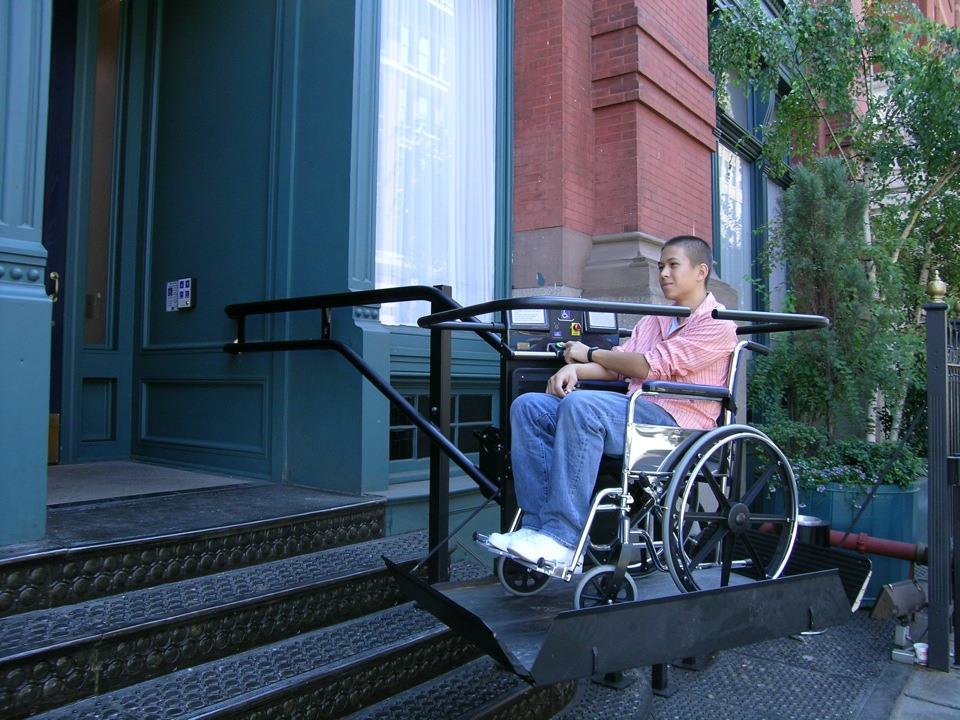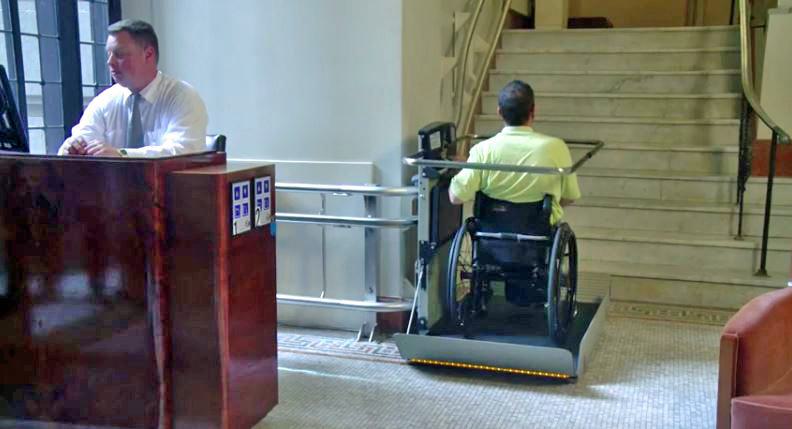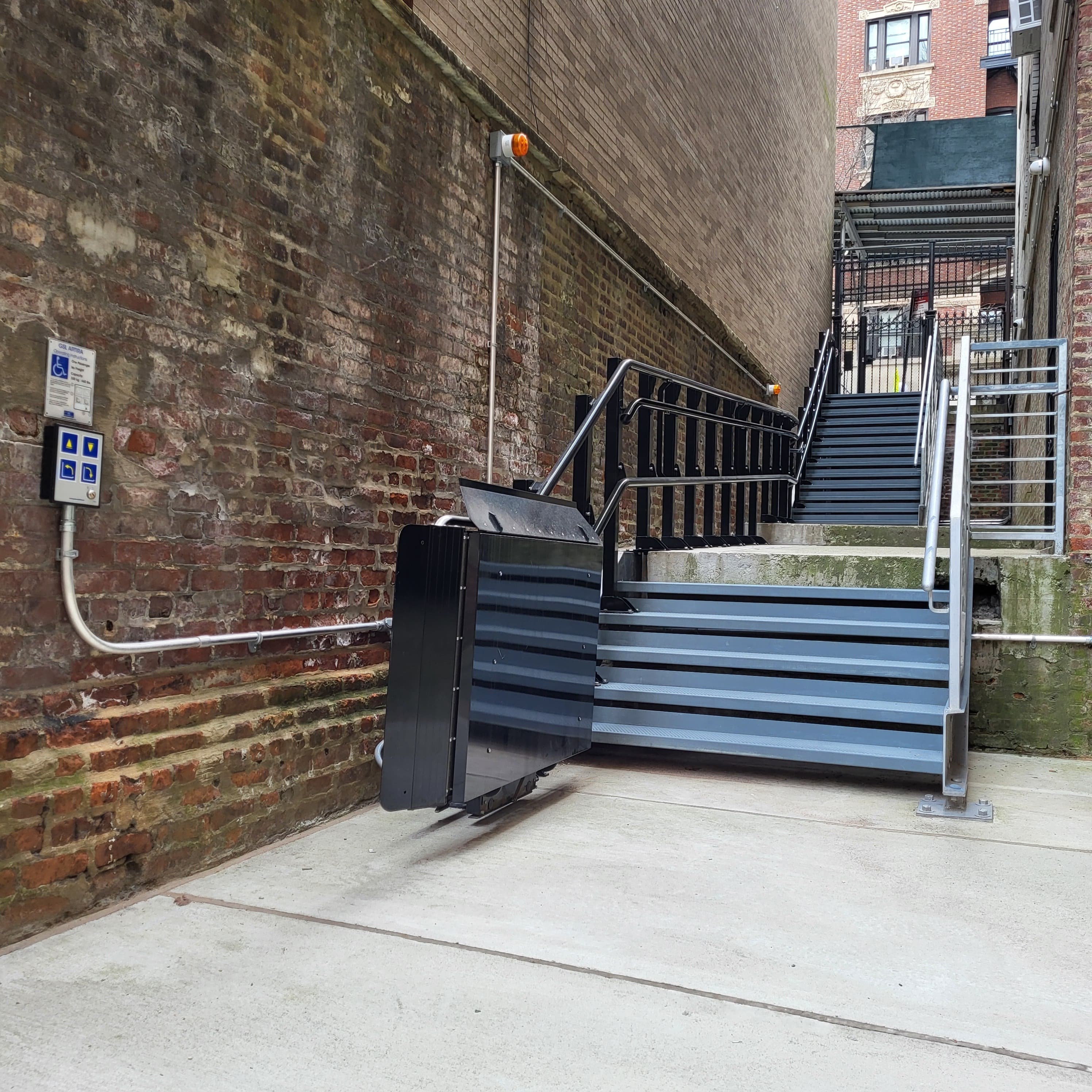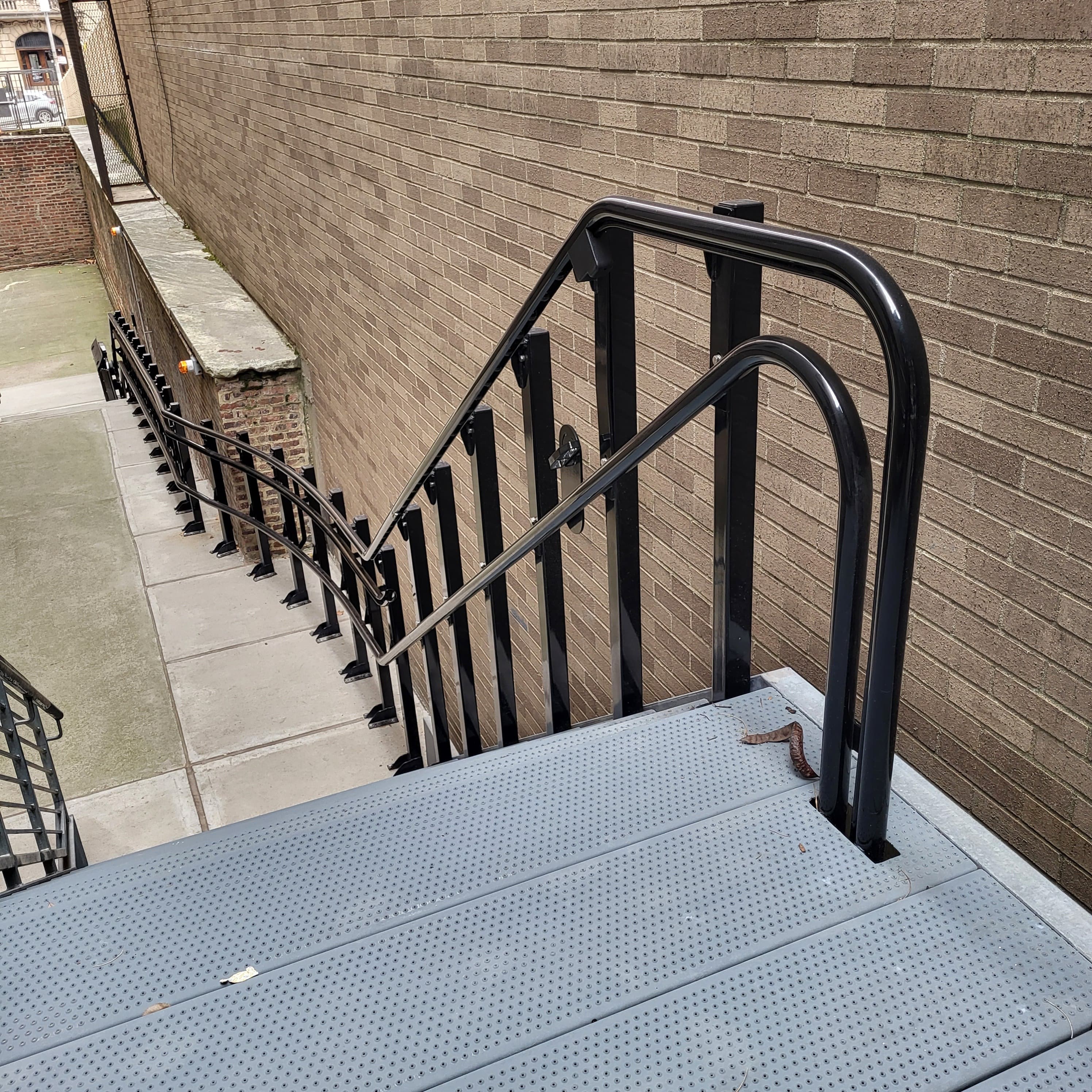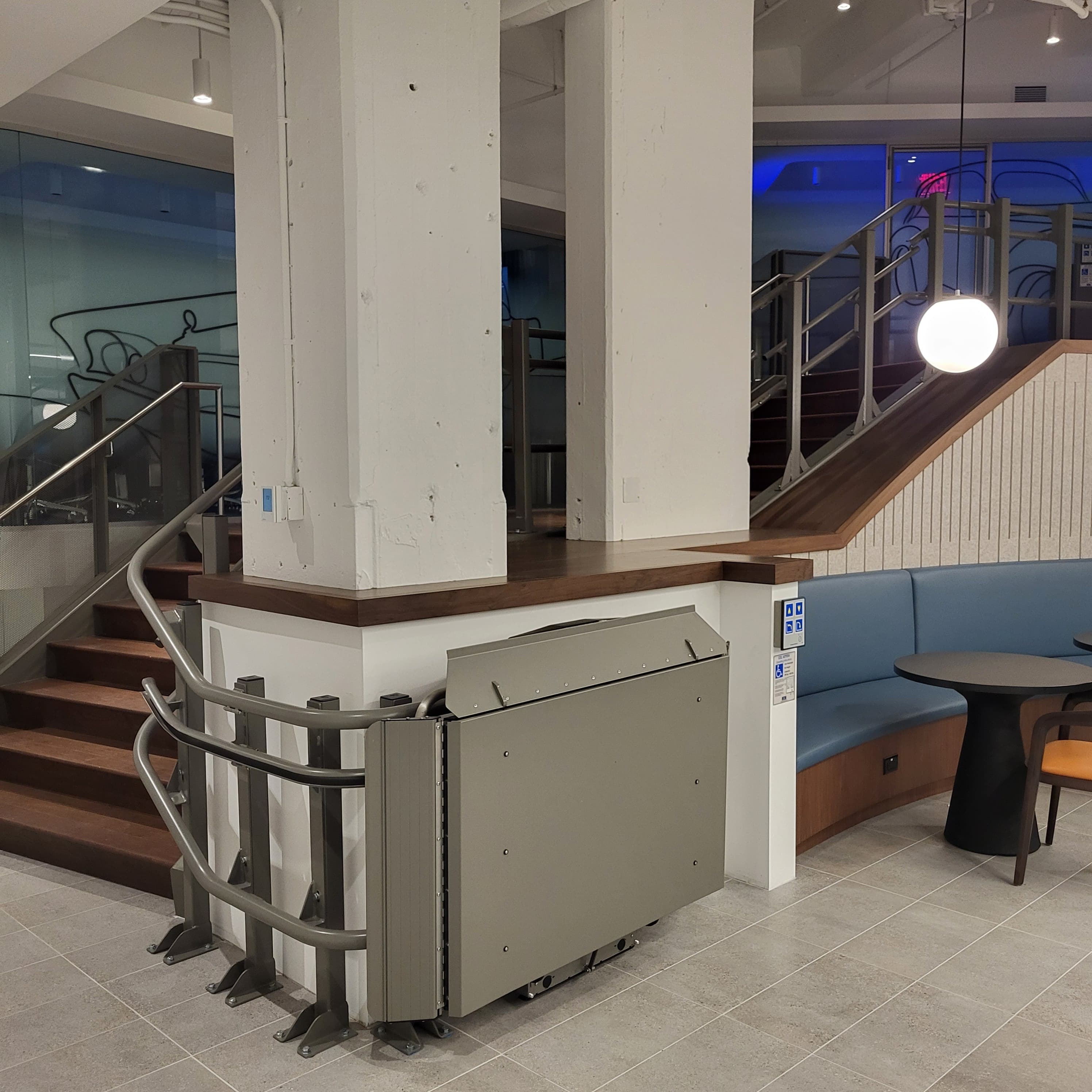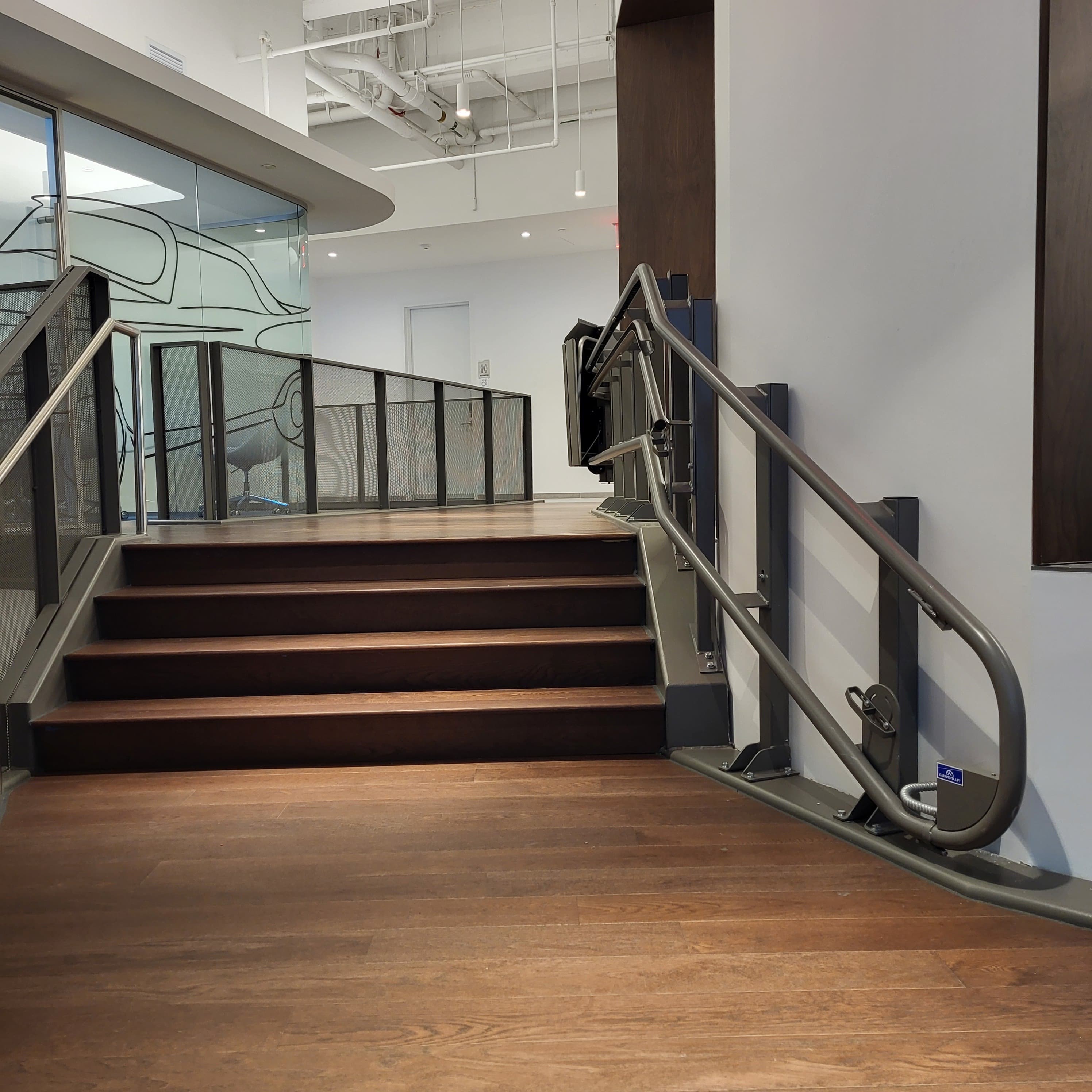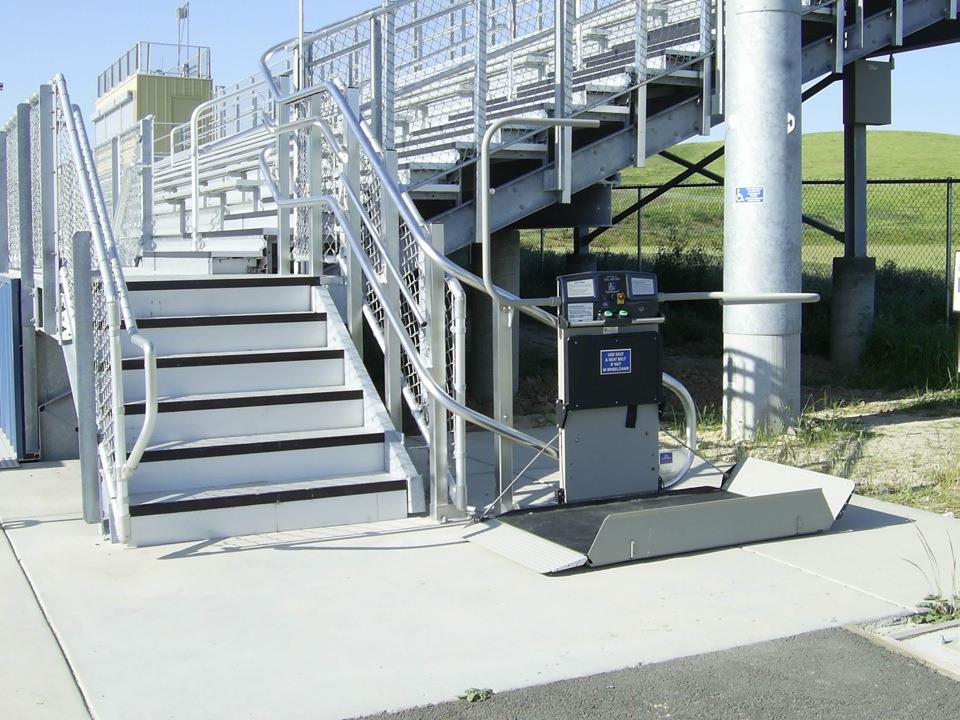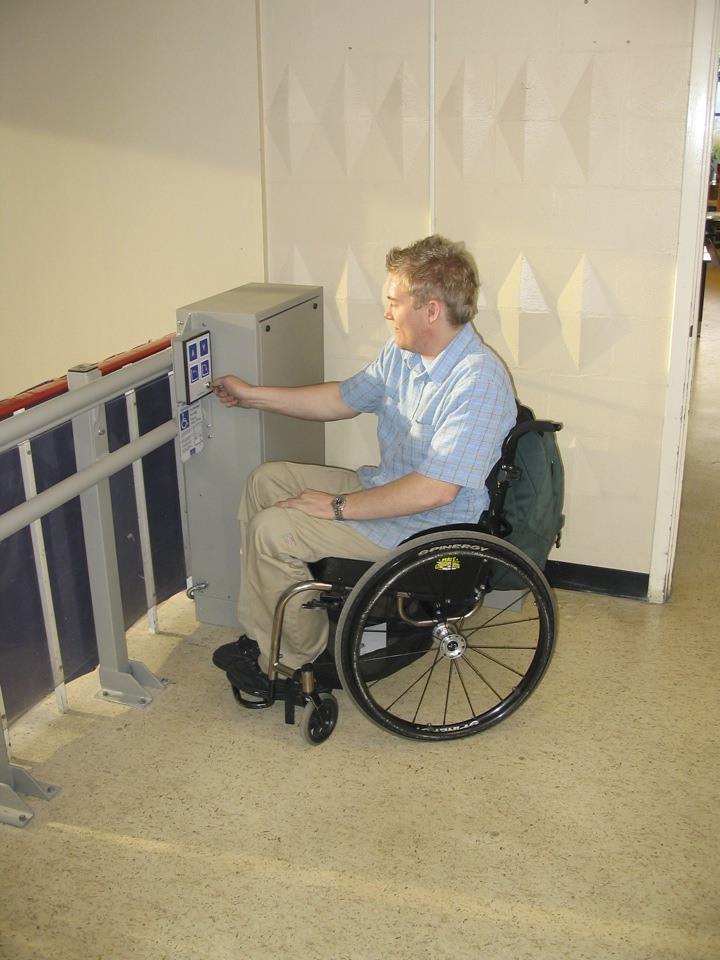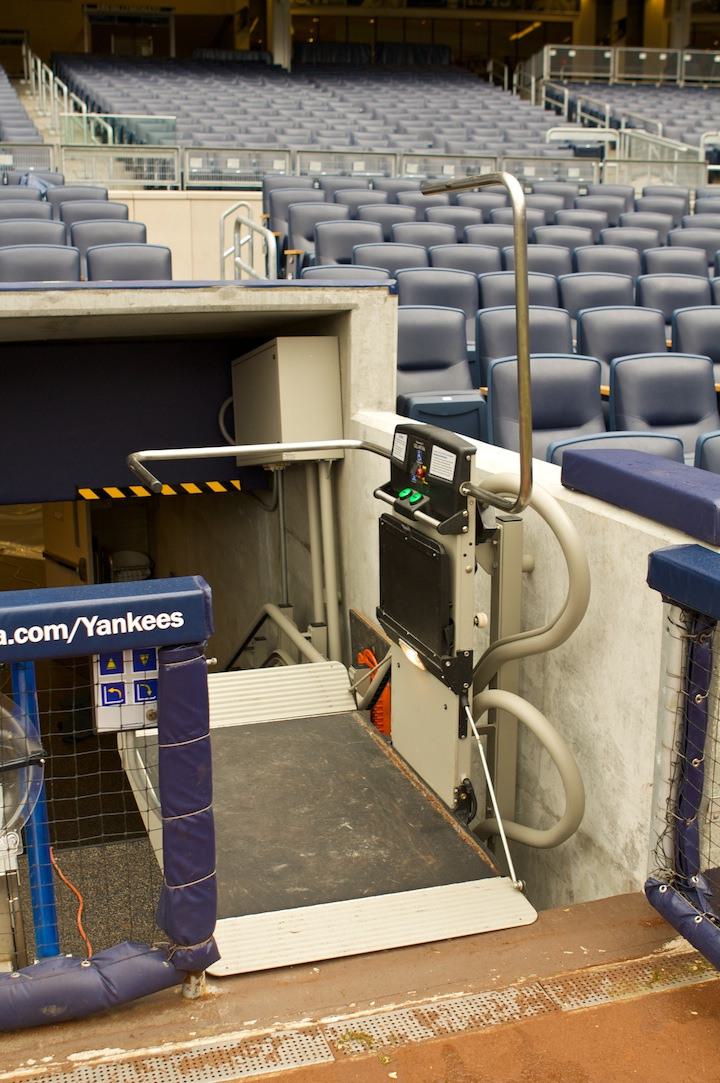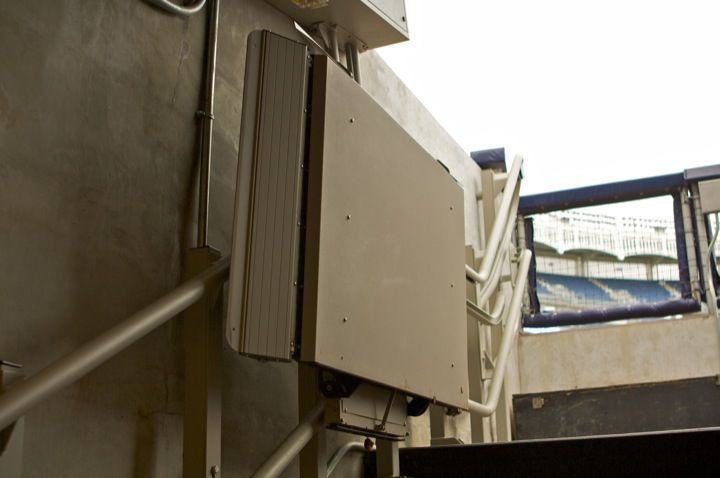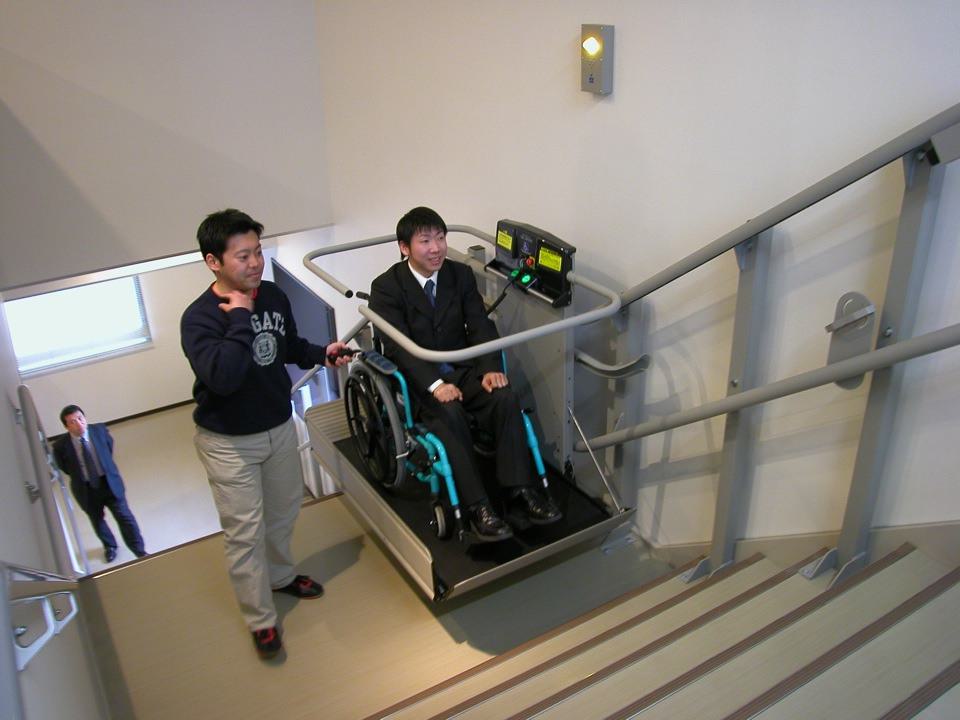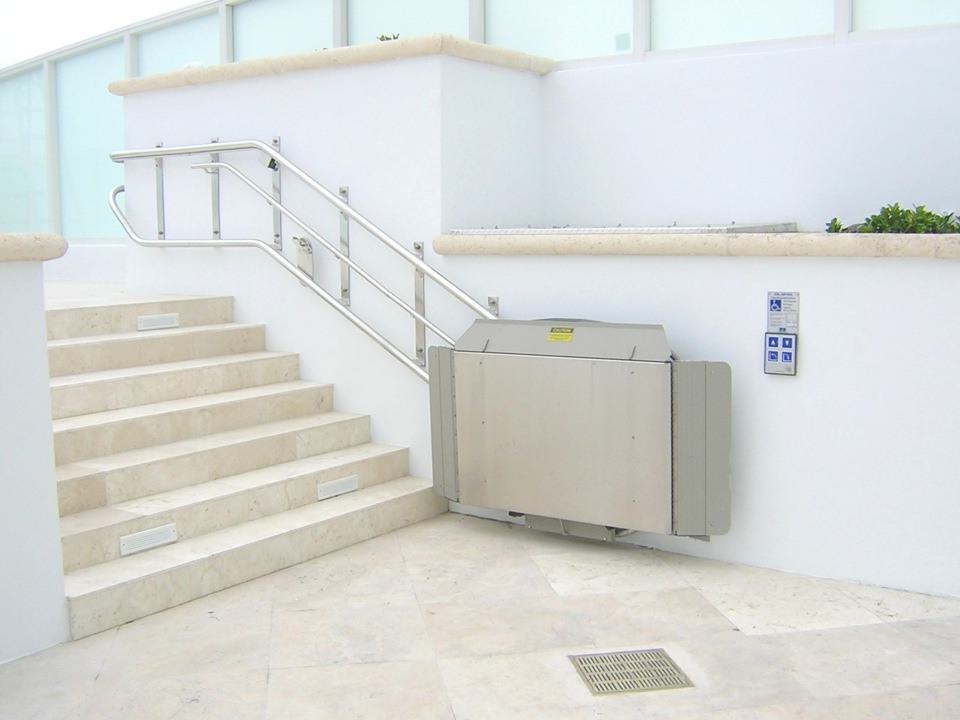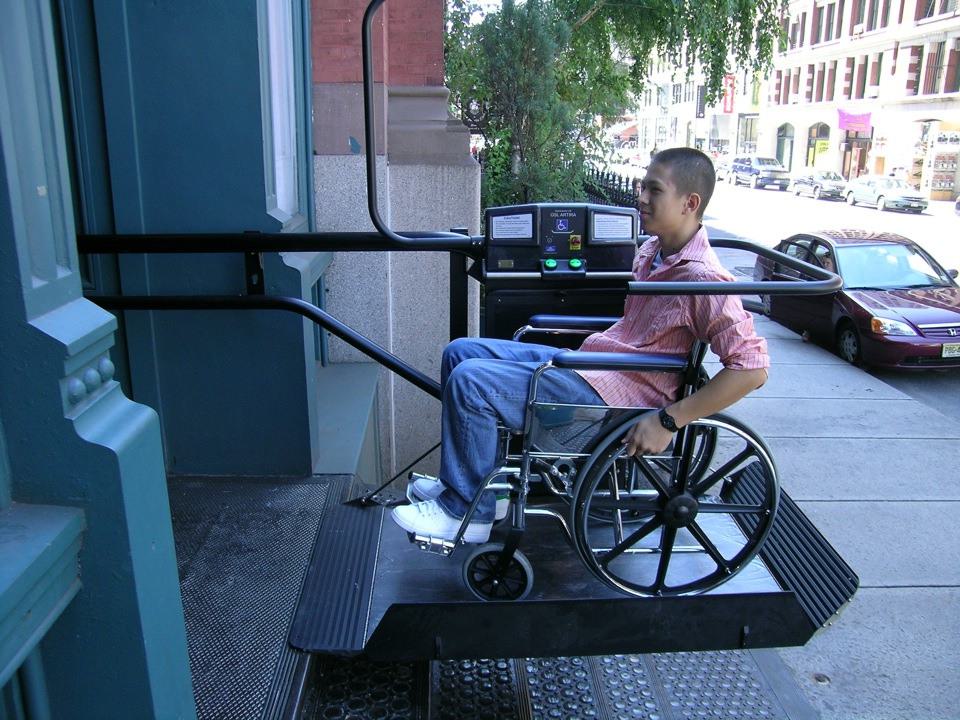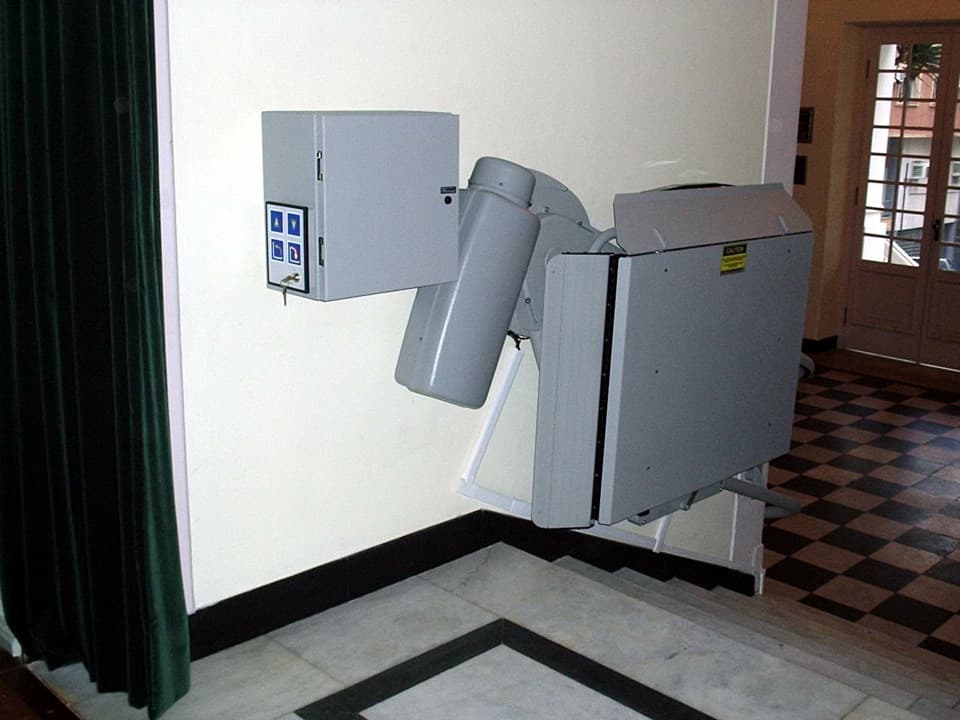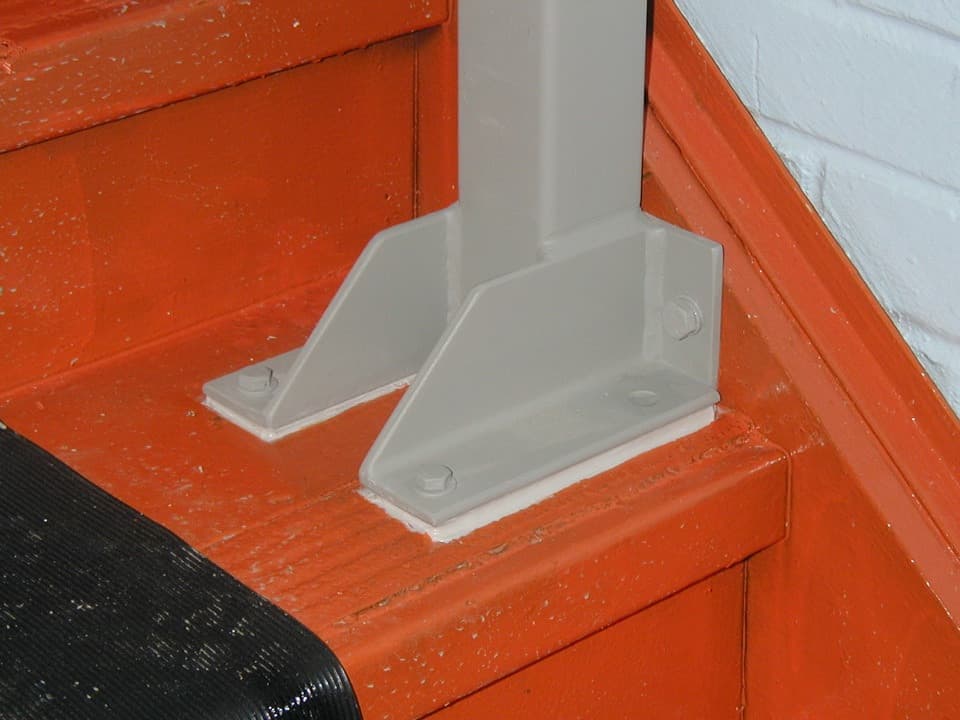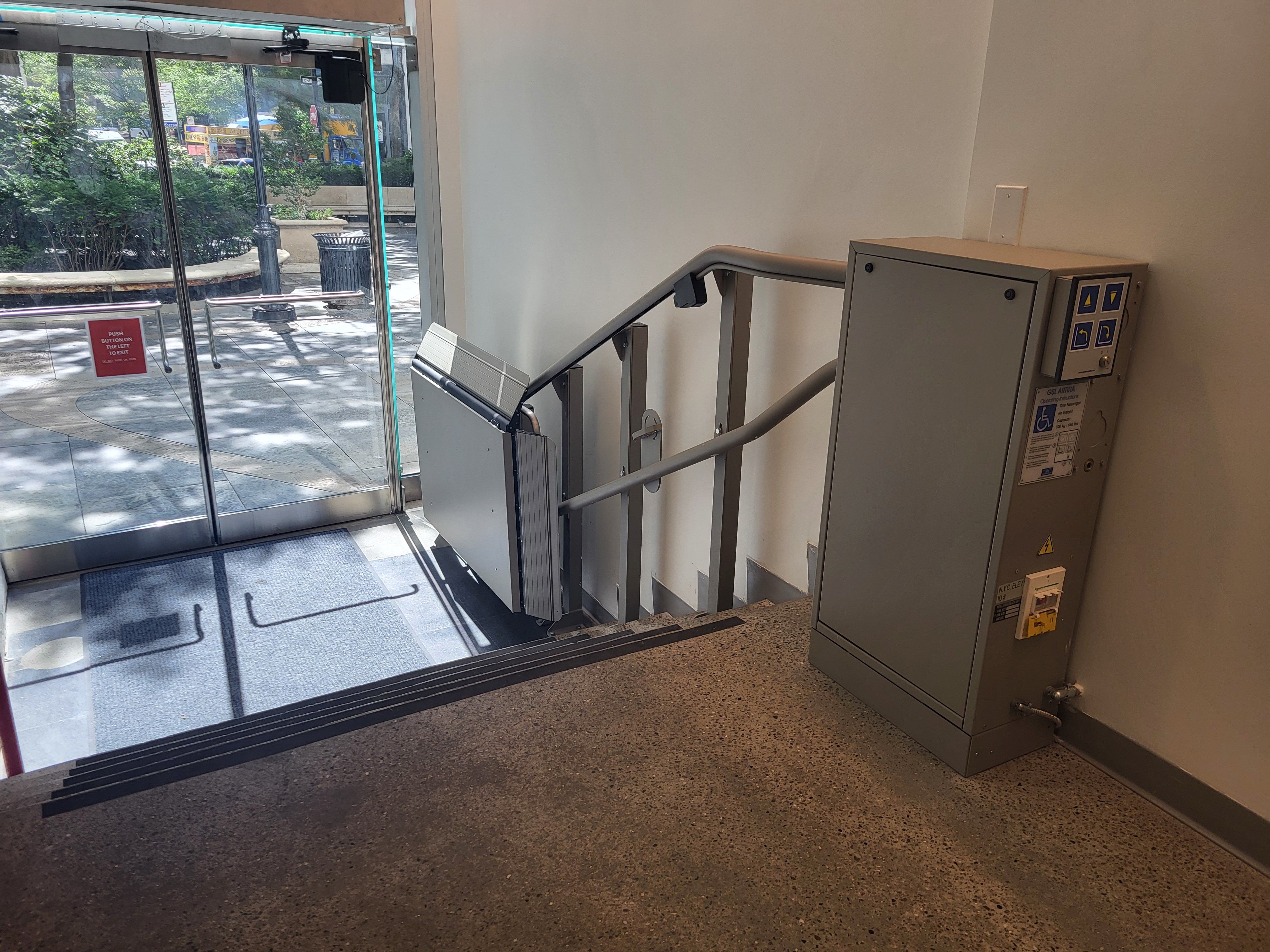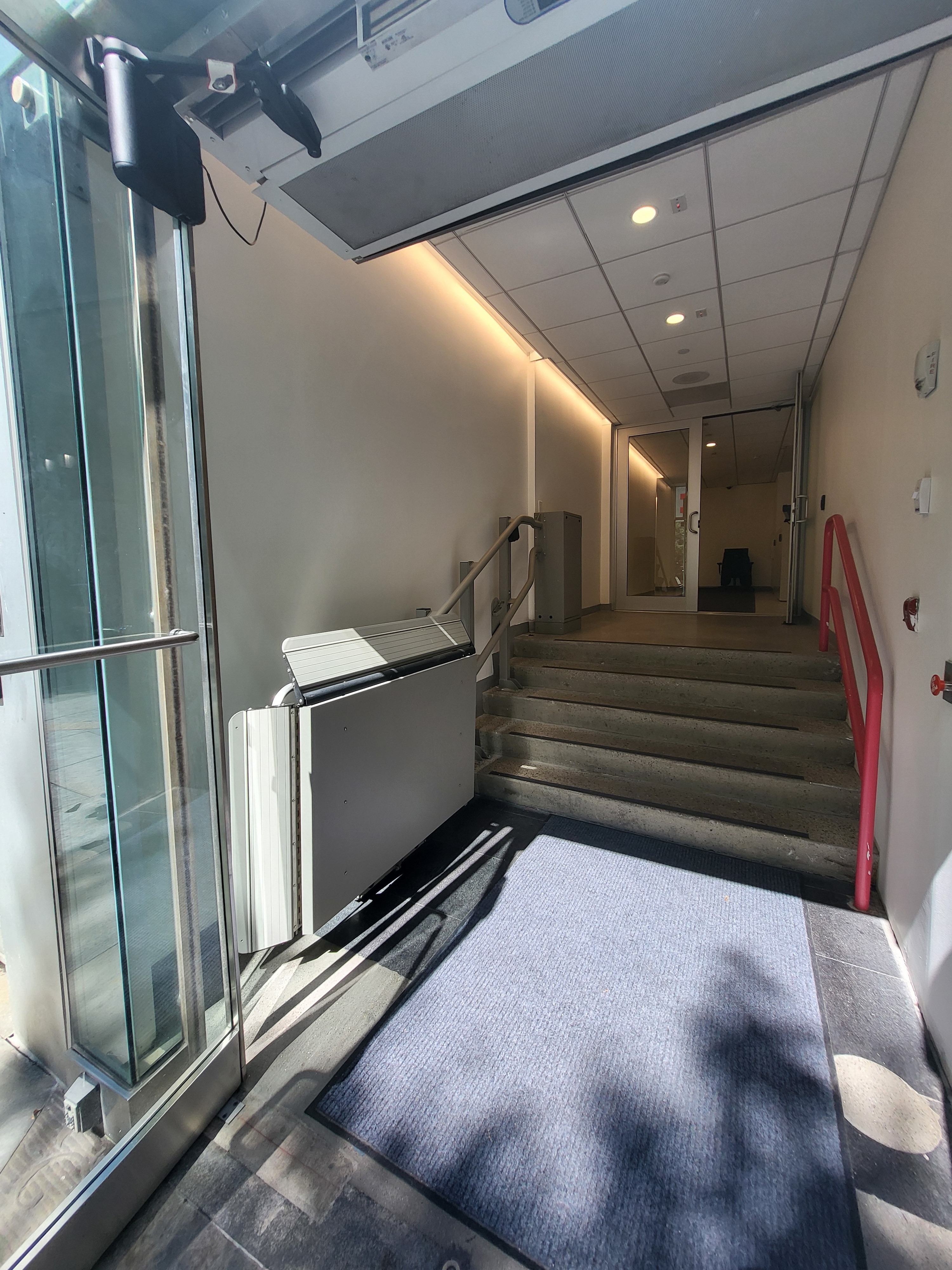Turning Inclined Platform Lifts
The turning Inclined Platform Lift (IPL) is the most versatile lift in our arsenal. Our preferred IPL, the Artira by Garaventa, offers the most flexibility when making a facility accessible. The lift travels over the staircase and folds up when not in use to save space. Often it can be installed without modification of the existing conditions. Handi-Lift, Inc. only needs an electrician to supply power, saving on construction costs.
Features
Drive Box
The drive system is in a lock cabinet which must be located at the top of the system. We can also bend the tubes to locate the drive box through a wall or floor into another room.
Platform Storage
Normally the platform is stored at the lower landing, but the platform can also be hidden in a cabinet or behind a door.
Towers in the Core
Towers in the core of the stair support the lift's tube system. Infill panels can be installed between towers to meet guarding requirements. These can be custom designed and supplied by others or the manufacturer's panels can be purchased with the system.
Hand Rail
The drive tubes are too high and low to meet handrail requirements, so a third tube handrail is necessary.
Emergency Power
A battery system can be employed if a generator is not available as a secondary source of power. At full load it can provide stand-by power for up to 5 trips. Battery driven systems do not meet the requirements for emergency or standby power.
Technical Specifications
-
Drive Systems
The Artira inclined platform lift has a choice of two different drive systems: the standard drive box or the compact drive.
Standard Drive Box: The drive is always located at the upper end of the guide tubes. You can hide it or locate it remotely below the floor, in an adjacent room, or in a cabinet at the top of the stairs. (See Feature List) This ultra quiet drive system has a programmable configuration controller which allows the Artira to be customized for each stairway application, including slowing at corners and landings, automatic folding, and building fire alarm integration.
Compact Drive: This drive is ideal for lifts with restricted upper landings. The compact drive utilizes the same components as the standard drive box, but they are arranged differently. The control box houses the electrical components separately so it can be placed up to 6m (20ft) away from the compact drive.
-
Platforms
The Artira inclined platform lift has a choice of two different drive systems: the standard drive box or the compact drive.
Standard Drive Box: The drive is always located at the upper end of the guide tubes. You can hide it or locate it remotely below the floor, in an adjacent room, or in a cabinet at the top of the stairs. (See Feature List) This ultra quiet drive system has a programmable configuration controller which allows the Artira to be customized for each stairway application, including slowing at corners and landings, automatic folding, and building fire alarm integration.
Compact Drive: This drive is ideal for lifts with restricted upper landings. The compact drive utilizes the same components as the standard drive box, but they are arranged differently. The control box houses the electrical components separately so it can be placed up to 6m (20ft) away from the compact drive.
-
Attachment Methods
To maintain the vertical separation between the tubes, distance struts and gussets are welded to the tubes. The struts are attached either directly to the wall or to steel support towers.
Direct Mount: The structural support of the lift can be mounted directly to the wall, or embedded in the wall. The vertical struts can be painted to match or recessed into the finished surface.
Freestanding Support Towers: Solid concrete stairs, steel pan stairs filled with concrete, or 76mm (3”) thick wood stairs/landings are required when there are no existing support walls or when the lift is freestanding. The towers are either bolted through the treads (where access is possible) or attached to a steel stringer for additional support.
Open Balustrade - Towers in the Core: Towers can be positioned within the open stair core when there is insufficient platform turning clearances or if the stairs are too weak for freestanding towers. The towers are fastened to the walls, stringers, or stair edge, and the floors. Handrails can be removed or special brackets can be used to allow for tube attachment to the towers without damaging the balustrade.
-
Controls
Platform Controls: The easy to use, durable and vandal resistant controls have been designed for public use and can be operated by hand, wrist or palm. The Artira is equipped with a pendant control that allows an attendant to operate the lift while walking beside a passenger. If the emergency stop button is activated it illuminates and an alarm on the platform will sound, alerting others that the passenger requires assistance. This feature is backed up by battery.
Key operation: Key operation is not required by current safety standards. If restricted access is desired we can add a key that is common to the industry and widely available. However, the building owner will be responsible to provide the key for passengers who do not already have one.
Call Stations: The call stations at each landing allow the user to fold or unfold the platform and bring the platform to their location. An emergency stop button, attendant call switch, keyless call station operation, and remote fold options are also available. The call stations can be located on a freestanding pedestal or mounted on the wall.
Smart-Lite Technology: Smart-Lite Technology is a computer-based lift control system that intuitively guides the user through the operating sequence by illuminating the appropriate button to push. The control buttons are large, bright, graphically clear, and give an audible "beep" when pushed. Fold and unfold functions are fully automated and work with a simple push of the illuminated button.
Proximity Key: We can add a swipe RFID key to our controls if standard key options are not sufficient.
-
Appearance
Standard Finish: The Artira's standard color is Satin Grey (fine textured) which compliments a variety of modern and traditional decors. We use a durable polyester powder paint coating that is electrostatically applied and baked at 210°C (410°F).
Optional Colors: You can select from 180 colors on Tiger Drylac's RAL Standard Color Chart. Additionally, Special Finishes and Metallic colors by Tiger Drylac are available. Hand-Lift, Inc. can also custom match colors.
Stainless Steel: The tubes and drive box can be made in stainless steel with a polished finish, or sandblasted and painted with standard or optional colors. For outdoor or humid indoor environments, the tubes must be stainless to avoid rust.
-
Safety Features
Curved Safety Arms: These fully automatic stainless steel safety arms further increase the safety of the passenger. In guarded position, the top of the arm is 948mm (37 3/8") above the platform deck. The design does not detract from the clear platform size.
Folding Seat: The seat is designed for use by ambulatory passengers and is equipped with a safety belt.
Bi-Directional Ramp Sensing: This feature detects an obstruction on the stairs and at the same time ensures the wheelchair is centered on the platform deck. When the lift is in the folded position and is called to or from the landing area the leading ramp is sensitive to obstructions.
Under Platform Sensing Plate: This sensing plate detects obstacles underneath the platform and stops the platform before exerting any significant force on the object.
Side of Hanger Obstruction Sensing: This feature is mounted on the side of the platform hanger and designed to protect pedestrian traffic especially when the lift is traveling around corners.
Under Hanger Sensing: This sensing plate detects obstacles underneath the hanger which is important when the platform is traveling in the folded position.
Soft Start and Stop: For passenger safety and comfort, the platform is programmed to slow to 50% of the normal travel speed in advance of the corners and landings.
Platform Folding: Once the passenger has departed the lift, the passenger or anyone else can fold the platform at the call station without the use of a key.
Emergency Manual Platform Folding: In an emergency the platform can be manually folded and it will remain in the folded position without assistance.
Auto Fold: After a determined period of time the platform can be configured to automatically fold up to ensure the stairway will remain clear if someone forgets to fold the platform.
Pedestrian Safety Lights: This illuminated tube lighting located at the base of the ramps visually alerts pedestrians of the platform’s location during travel.
Pedestrian Audio Alert: When the platform is folded up and traveling between stations, an audio chime on the platform is activated indicating the lift is in motion. The chime is deactivated when a passenger is using the lift.
Platform Lock: This lock secures the platform in its folded position protecting the lift from vandalism.
Fire Alarm Integration: This option is designed to interface with the building fire safety system, and interrupts power to the lift when the alarm sounds, ensuring the lift will not obstruct stairway traffic during an evacuation. If the lift is in use when the alarm sounds, it will continue to a designated landing. In some jurisdications automatic fire alarm interface is required. (See Article)
Need a custom solution? We're here to help, contact us with your questions, anytime.
Frequently Asked Questions
From product details to service support, explore answers to our most frequently asked questions.
We deliver accessibility with dignity through comprehensive solutions, not just wheelchair lifts, for both commercial and residential needs.
